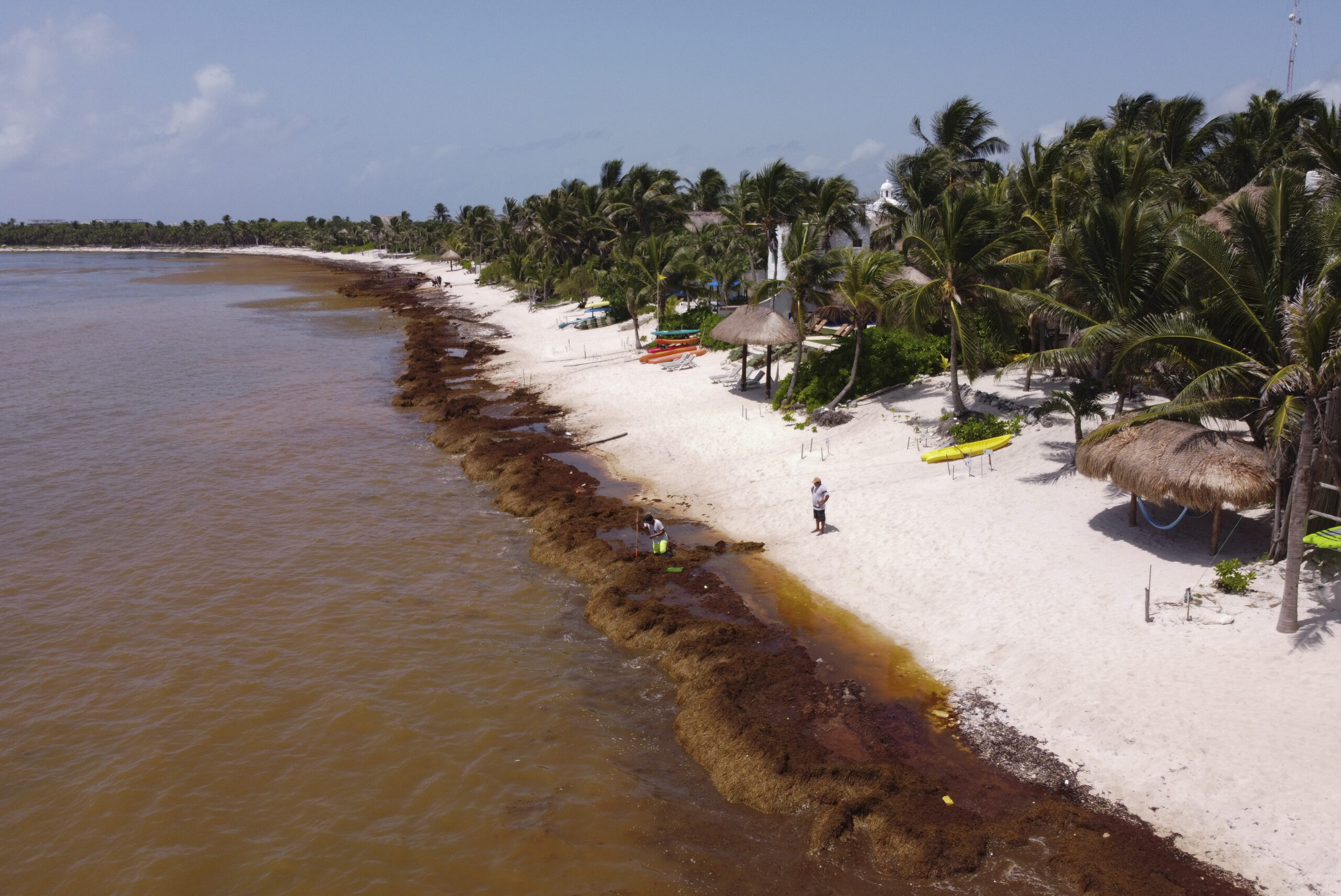If you have a vacation planned in South Florida later this year, Or the Caribbean or Yucatan Peninsula in Mexico, brace yourself to possibly be affected by a giant blob of seaweed slowly moving its way there. This thing is big and nasty.
A 5,000 miles seaweed belt will hit beaches in those regions this summer. It even has a name — The Great Atlantic Sargassam Belt — and stretches from West Africa to the Gulf of Mexico. It is floating in the ocean, and when it lands ashore, it will be a pain for hotels and resorts. For one thing, it stinks. It releases a pungent odor as it because on the beach.
Plus, it’s gnarly, and animals and humans who step into it could get tangled up. For luxury resorts with a large swatch of beachfront exposure, this will be something they will have to deal with all day, every day.
This particular batch of seaweed differs from others because it reproduces on the water’s surface. According to an AP story, it serves an ecological purpose and provides a breeding ground, food, and habitat for animal and marine life.
Here’s how Rick Lumpkin, the director of the Physical Oceanography Division at NOAA, described it in the AP story.
“It’s a dynamic, constantly changing set of pieces of this large mass. It’s not one big continuous blob heading straight to South Florida.”
When a mass of it piles up on beaches, the hot summer sun will decompose it. That’s when the rotten egg smell arrives, and it’s unpleasant. Long-term exposure to it could cause problems for people with respiratory issues.
It will be a struggle for beach cities and towns to handle this influx of seaweed, and tourism could be affected.
Scientists who track this phenomenon say more than 10 million metric tons are in the belt moving to Florida.


















Add comment